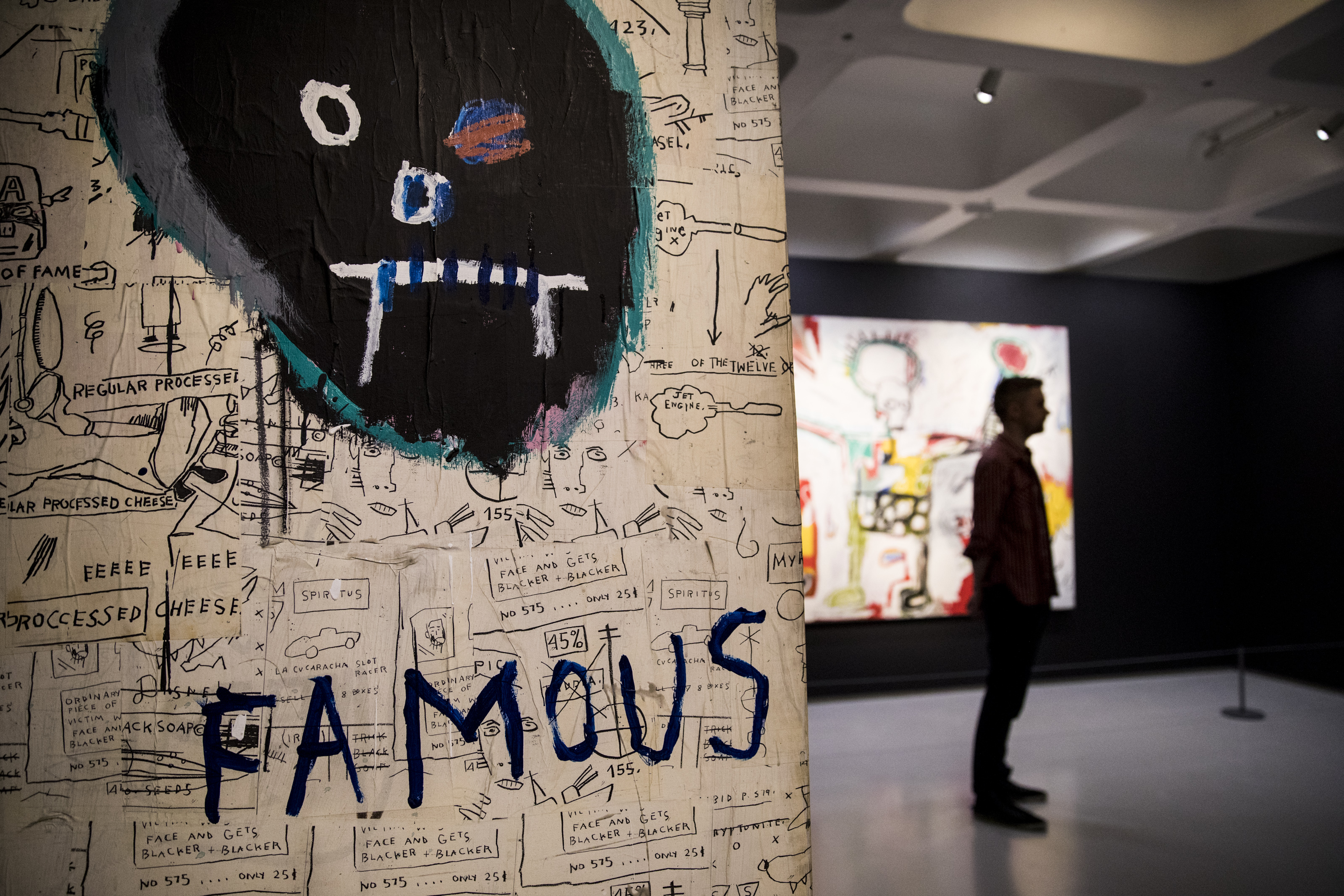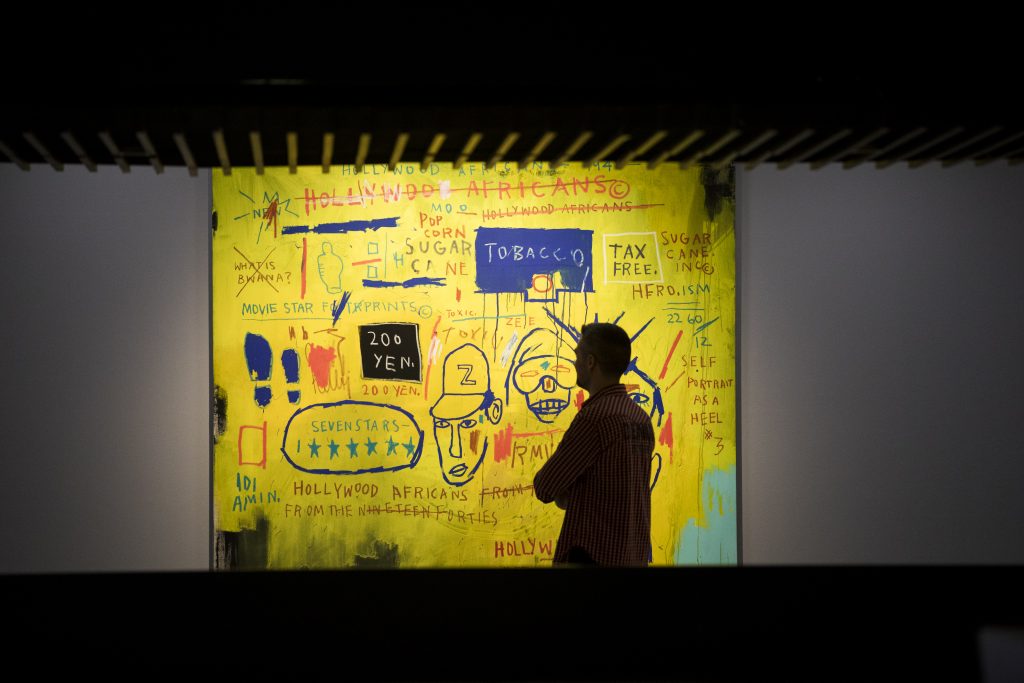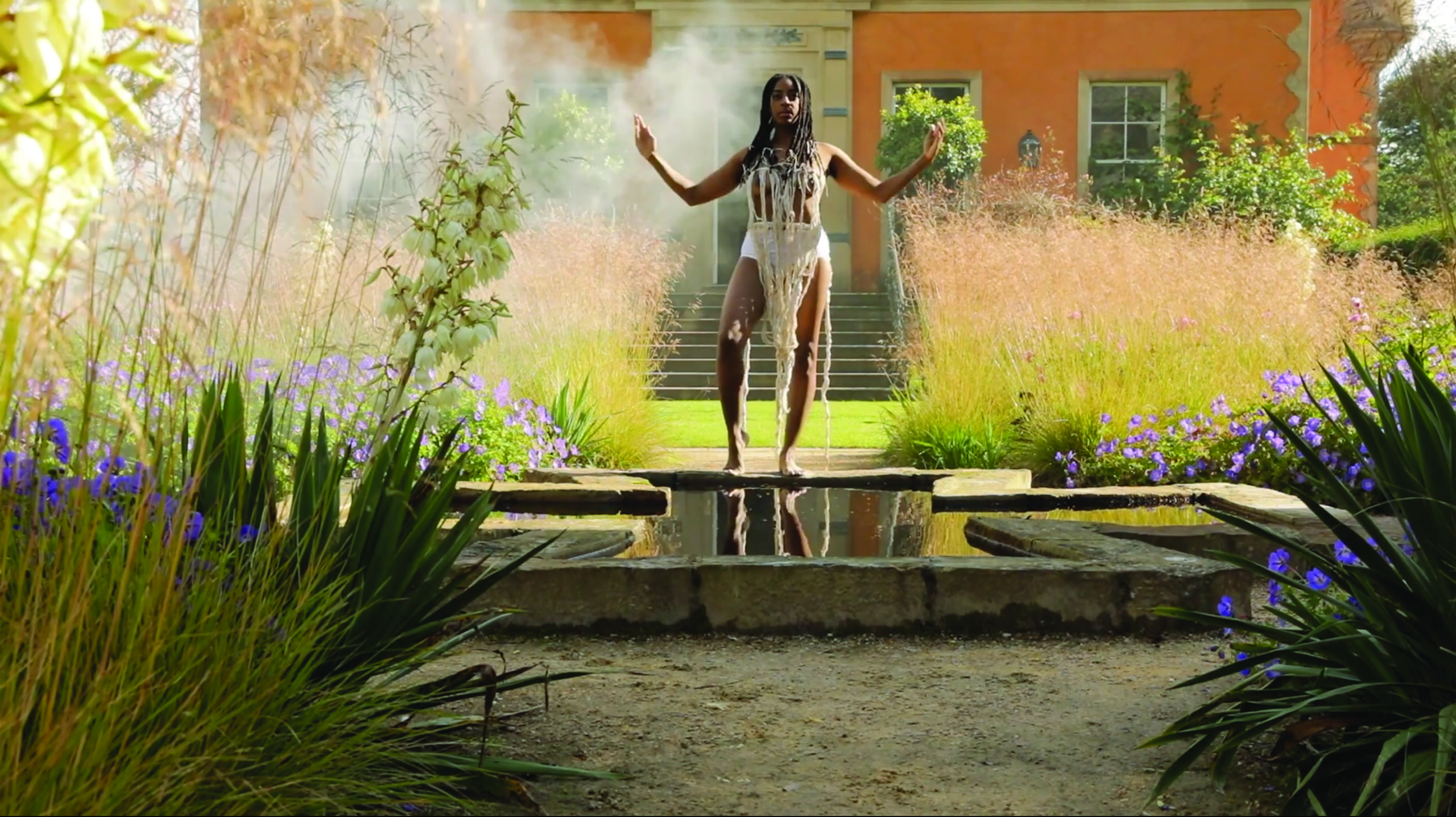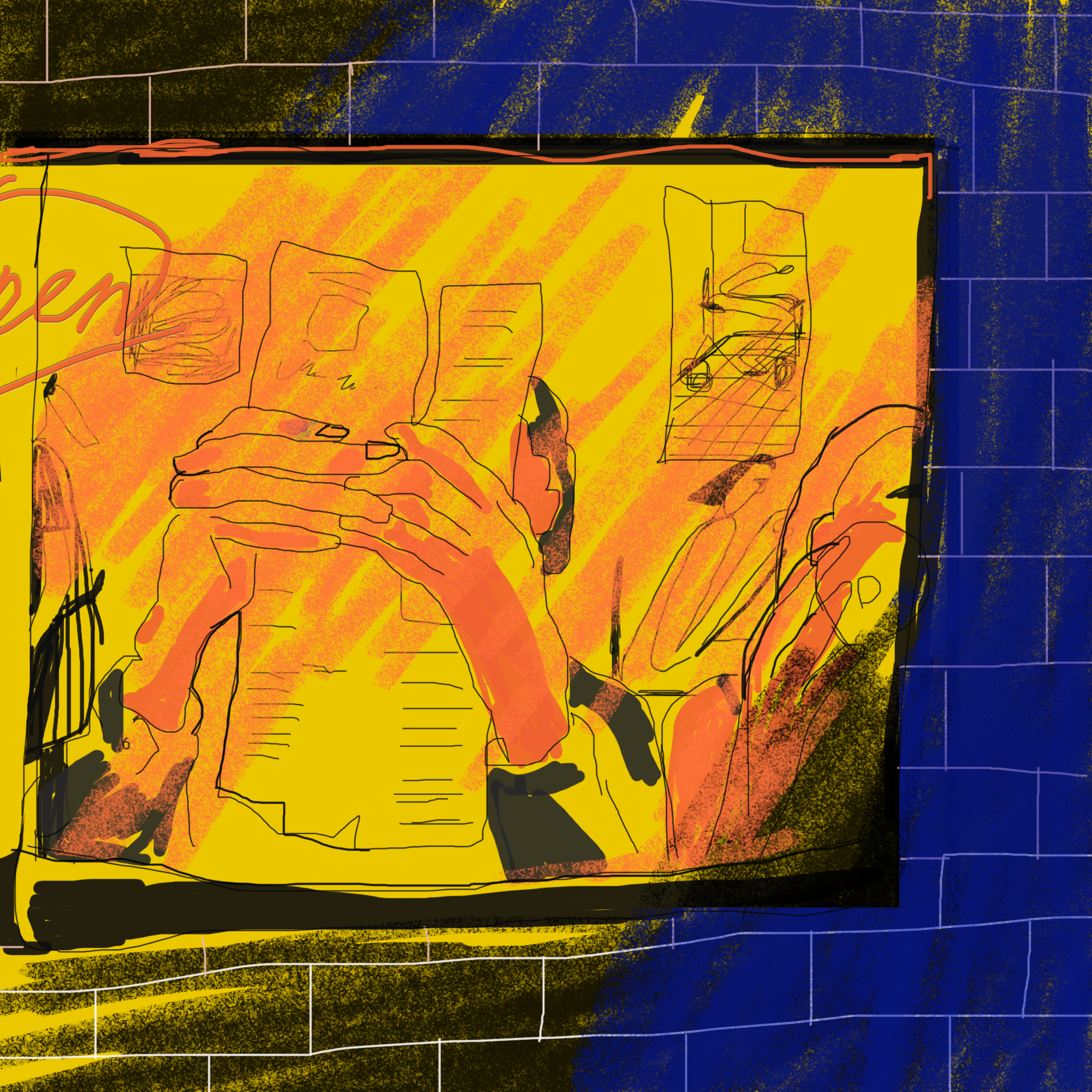
It’s been almost three decades since Jean-Michel Basquiat’s tragic death, and yet 2017 has somehow proven to be his year. In May, an untitled 1981 painting by Basquiat was bought by a Japanese billionaire for $110 million, making it the most expensive piece by an American artist ever sold, and cementing his place among the greats. This autumn, the Barbican Centre has finally dedicated a major exhibition to the icon – the first of its kind in the UK – that showcases over 100 pieces of his work, and delves into the life of a fascinating figure.
While the line between art and artist is often blurred, there’s always been a distinct cult of personality around Basquiat, who often drew comparisons to a rock star. His biography almost reads like a movie script: from gifted child to high school dropout; from homeless graffiti artist, tagging Downtown New York’s buildings with anarchistic slogans, to darling of the art scene, loved and lauded by his peers. A handsome and charismatic character, Basquiat effortlessly navigated the worlds of art, music, film and fashion: he dated Madonna, partied at Studio 54, had a bromance with Warhol and even walked the runway for Comme des Garçons. By his early twenties, he’d garnered worldwide recognition and critical acclaim, amassing so much wealth that he’d famously paint wearing Armani suits.
His death at 27 from an accidental heroin overdose, while undeniably a devastating loss, only added to his allure – as the passing of the beautiful and damned so often does – and placed even greater value on not only his work but also his every possession. Almost 30 years on, Basquiat’s star still shines and he’s just as adored by today’s glitterati: Jay Z name-checks him on Magna Carta; Ellen Degeneres and Elton John are well-known fans; and The Weeknd’s once-famous “crown of dreadlocks” was, no doubt, in homage to the icon.
“Basquiat might have dazzled the notoriously white art world and dated white women, but he remained acutely aware of his blackness”
To fixate on Basquiat’s star power, however, is to undermine the artistic genius that led to his fame and fortune, not to mention such an enduring legacy. Despite having no formal training, Basquiat is recognised by critics as a once-in-a-lifetime talent, who boasted an encyclopaedic knowledge of the great artists who preceded him and a broad frame of cultural reference that informed his work. His pieces are at times personal (self-portraits are many), at others packed with social commentary and symbolism, most notably exploring race. Basquiat might have dazzled the notoriously white art world and dated white women, but he remained acutely aware of his blackness and focused in on everything from the slave trade to the mistreatment of black athletes and musicians in the early twentieth century. In Hollywood Africans (1983), a particularly striking bright yellow piece that fills one of the gallery walls, he references white hegemony in the film industry – an observation that sadly still rings true today. Basquiat was known to be fond of pastiche, even daring to pay tribute to the Mona Lisa, yet his style is effortlessly his own: chaotic and visceral and assertive and striking. He manipulated colour with ease, was especially adept with a paintbrush and worked at a dizzying pace of a true prodigy.

Basquiat: Boom For Real, Installation view, Barbican Art Gallery
21 September 2017 – 28 January 2018, © Tristan Fewings / Getty Images
Boom for Real is as much an exhibition on the artist’s life as it is his work, and curator Eleanor Nairne chooses to arrange the show into themes that emphasise the overlap between the two. In the Warhol room, for example, various paintings the artists collaborated on are surrounded by letters, photographs and other personal artefacts that highlight their famous friendship. Many sections aim to capture the excitement of the post-punk era and the effervescence of Downtown New York, with Polaroids of the eclectic crowd that Basquiat moved with and flyers from the club nights he frequented, alongside the portraits and paintings they inspired. There’s a room dedicated solely to his notebooks, where an audio recording of Basquiat reading plays from the speakers, and throughout the exhibition are screens showing clips of him dancing, painting or responding to interview questions in his ever so nonchalant manner. By curating and displaying such a vast range of media, Nairne builds up a vivid, 360 image of the artist that makes it hard not to feel his presence in every brushstroke.
“if one isn’t left a little uncomfortable from the more gritty elements, has his work been truly appreciated?”
The exhibition has so far drawn unanimously positive reviews and, on opening weekend, the Barbican was quite literally buzzing. Inside, there was an eclectic crowd – plenty of bespectacled Basquiat-loving hipsters, of course, but also visitors young and old, of every ethnicity and from all over the world. It’s a touching tribute to an artist who himself transcended many barriers, and equally pleasing to see that his unabashedly political work still seems to have mainstream appeal. Exiting through the gift shop, however, which overflowed as everyone rushed to take home a bit of that Basquiat “cool”, one could only wonder how often such shrewd social commentary is overshadowed by the man himself. Basquiat and his work have been endlessly commercialised and romanticised, yet the biting observations that are quite literally scrawled in bold on the canvas often remain an afterthought. And while Boom for Real certainly touches on the many elements of the African American experience that inspired his paintings, it doesn’t fully engage with the subject of race nor encourage the viewer to do so, instead opting for a more palatable programme that’s largely biographical and inoffensive to a wider audience. As a visitor, it’s fairly easy to glide through the Barbican admiring Basquiat’s brush technique or spotting the celebrity cameos, but if one isn’t left a little uncomfortable from the more gritty elements, has his work been truly appreciated? Because while it’s clear the artist is just as alluring today, it’s ultimately his art that’s as pertinent as ever.
You can buy tickets for Boom for Real online at the Barbican here.
Discounted tickets for 14-25 year olds can be sourced through Young Barbican.









